Triathlon Wetsuit Rules
What is the maximum water temperature for a wetsuit legal swim? How cold does it have to be for the swim to be cancelled? We explain everything you need to know about the triathlon wetsuit rules.
Many people choose a triathlon with a pool swim for their first-ever race. However, as you continue your triathlon journey, you will eventually need to learn about swimming in open water. This can include lakes, rivers, or the ocean. Depending on the race, you may or may not be allowed to wear a wetsuit. Sometimes they may be optional, at other times they may be mandatory or banned. There are specific triathlon wetsuit rules that you need to be aware of before race day.
What are the triathlon wetsuit rules?
The main rules relate to the temperature of the water. At lower temperatures, wetsuits are mandatory or the swim may even be canceled. In warmer temperatures, wetsuits may be optional or banned. The exact rules for various temperatures are listed below.
- Below 53°F (11.5°C) - Swim cancelled
- 53°F (11.5°C) - 61°F (16°C) - Wetsuits mandatory
- 61°F (16°C) - 78°F (25.5°C) - Wetsuits allowed
- 78°F (25.5°C) - 84°F (29°C) - Wetsuits allowed but users not eligible for awards
- Above 84°F (29°C) - Wetsuits banned
The rules can vary depending on the governing body so make sure to check with the organizers for your race. The wetsuit rules discussed here relate to USA Triathlon events. A full list of their rules can be found here.
The wetsuit rules for the World Triathlon Corporation, including Ironman races, are almost identical to these. The one change is that the point at which wetsuits are allowed changes from 78 to 76 degrees.
These rules can also vary depending on the race distance. Generally, if the race is longer (over 1500m), it is more likely to be shortened or canceled in extreme conditions.
Wetsuit thickness
Another rule is that your wetsuit should not be more than 5mm thick in any place. Most triathlon wetsuit retailers are aware of this and do not design suits thicker than 5mm. If you are looking to buy a triathlon wetsuit, we have produced a buyer’s guide to help you choose the right suit for you.
It is also important to note that these rules apply to all types of wetsuit, including full-length, sleeveless, or shorties. In warmer temperatures, you can wear a short or sleeveless wetsuit to prevent overheating.
How the temperature is measured
The water temperature will ideally be measured in the two hours leading up to the race. For this reason, you may be given short notice about whether or not wetsuits are legal for your race. The water temperature is measured at roughly 50cm below the surface.
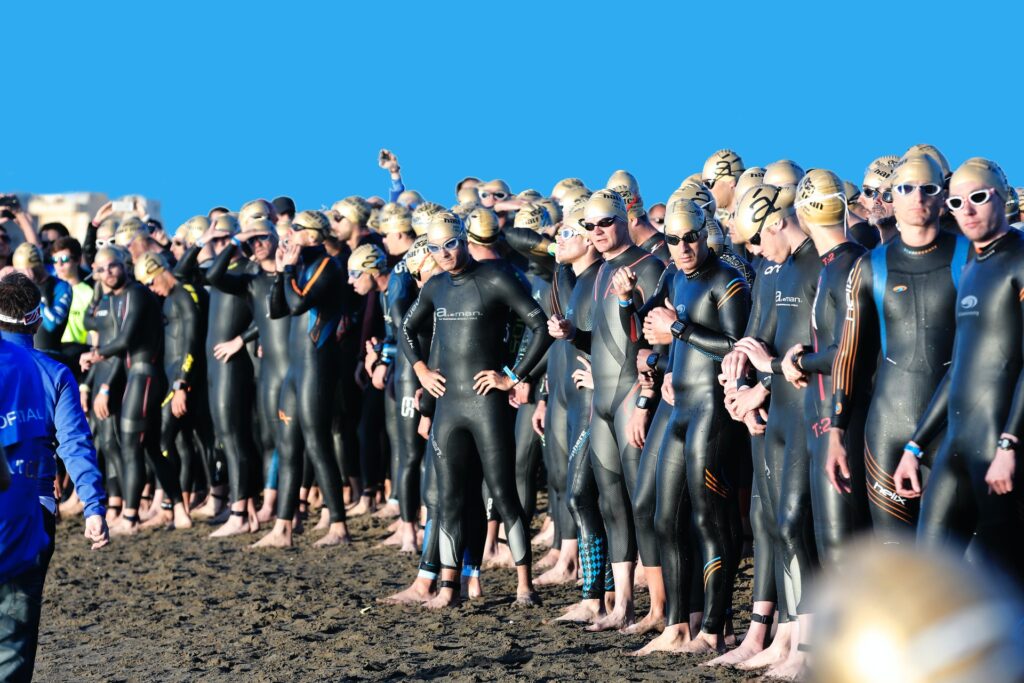
Why are wetsuits not allowed?
The reason for banning wetsuits is that athletes may become dangerously overheated. It can be easy to overheat while swimming hard in warm water if you are wearing a wetsuit. Symptoms include an increase in heart rate, muscle weakness, and even loss of consciousness. Wetsuits are banned to ensure the safety of the participants.
Benefits of a wetsuit
Warmth
The obvious benefit of a wetsuit is that it keeps you warm. Many triathlons feature sea or lake swims with water temperatures as low as 50°F (10°C). A wetsuit will insulate you against the cold, allowing you to swim safely for longer.
Speed
The biggest advantage of a wetsuit is that it allows you to swim faster. Wetsuits provide buoyancy due to the many tiny air pockets in the neoprene. This buoyancy keeps you higher in the water, which makes your swimming more efficient. Many swimmers do not have the technique required to keep their legs high in the water. A wetsuit can help you improve your form and therefore swim faster and more efficiently.
Should You Wear A Wetsuit?
Water temperature
If the water temperature is very cold then you should wear a wetsuit for safety reasons. The risk of cold-water shock or hypothermia is too great to take chances with. If the temperature is warmer then you can choose based on other factors.
Swimming ability
Weaker swimmers may prefer to always use a wetsuit when it is allowed. The buoyancy from the wetsuit will allow you to maintain a horizontal position more easily. It can also be helpful if you panic in the water, as you can float more easily while waiting for help. Stronger swimmers may prefer not to use a wetsuit if their technique does not need any help.
Race distance
In a longer race, a wetsuit will provide valuable warmth and buoyancy. However, during shorter races, these benefits are not as important as you are not swimming for a very long time. It can take some time to remove a wetsuit in transition, so it may be faster to swim without one in a short race.
Wetsuit experience
If you have never worn a wetsuit, don’t make a triathlon race the first time you use one. You should never try new equipment on race day, as it can throw up nasty surprises. If you are new to wetsuits, make sure you practice swimming in open water at least a few times before the race. You will feel much more confident if you have tested your kit.
What wetsuit should you wear?
A thicker wetsuit provides more warmth and buoyancy than a thinner suit. Your choice of wetsuit should depend upon the water temperatures that you normally swim in. For colder temperatures, go for a suit with 5mm panels on the chest and legs. If you swim in warmer waters, your wetsuit should be 2-3mm thick at the most.
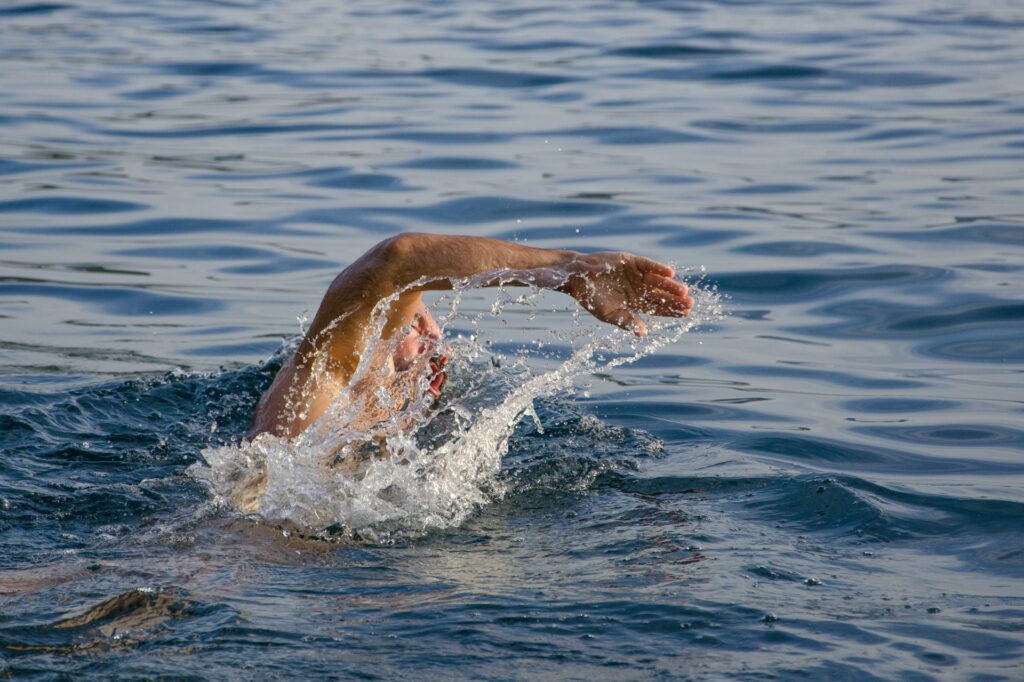
Alternatives to a wetsuit
Sleeveless
A sleeveless wetsuit is full-length in the legs but cuts off at the shoulder. They provide similar buoyancy to a traditional wetsuit but give you more flexibility around your shoulder. Some triathletes find that a wetsuit can restrict their stroke, so prefer to race in a sleeveless wetsuit. They are also useful if the temperature is too warm for a full-length wetsuit.
Swimskin
This is a one-piece suit that can be worn instead of a wetsuit if the temperature prevents wetsuit use. They are not made of neoprene, so do not provide warmth or buoyancy, but they do allow you to swim faster. The water-repelling material provides slight compression to reduce friction between you and the water. As a result, a swimskin will help you to swim faster for the same amount of effort.
Tri suit
If you are serious about triathlon, you should be wearing a tri suit for every race. They can be worn underneath a wetsuit or a swimskin for the swim, and then also used on the bike and run legs. Alternatively, if the water is warm enough, you can just wear a tri suit. They do not provide the same hydrodynamic benefits as a swimskin but will be much better than loose-fitting kit. A swimskin is more of a luxury purchase than a necessity. Therefore, if you are on a budget you should save your money and just go for a tri suit.
Most Common Rule Violations
There are numerous other rules in triathlon that many people do not know about. The most common rule violations in USA Triathlon events are listed below. A more detailed explanation of the rules can be found here.
- Helmet not being worn while touching your bike
- Helmet chin strap not being fastened
- Receiving outside assistance
- Gear not being placed in your transition area
- Drafting or riding illegally on the bike
- Cutting the course
- Unsportsmanlike conduct
- Using headphones
- Race number not being visible
- Littering
Check your race
The key thing to remember with the triathlon wetsuit rules is that they can vary depending on the race. If your event takes place in waters that never get warmer than 76°F then we recommend you always wear a wetsuit because of the advantages they give. If the waters sometimes go above this temperature, be prepared for both eventualities. Practice swimming both with a wetsuit and without one. It can be a difficult transition if you are used to always wearing a wetsuit when you swim in open water.
You might also like
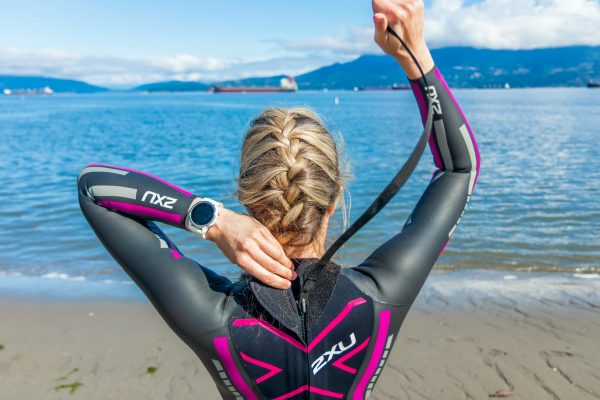
Best Triathlon Wetsuit
Buyer's Guide
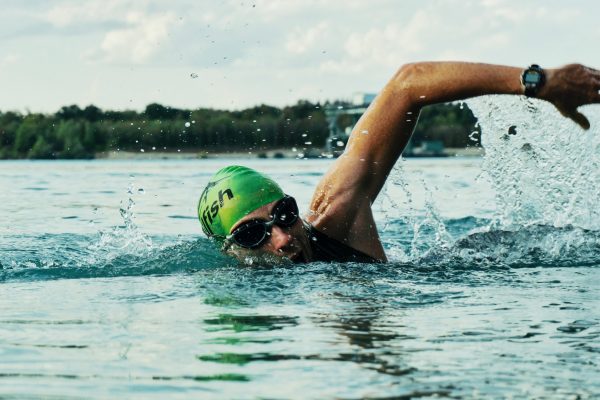
Best Triathlon Watch
Buyer's guide
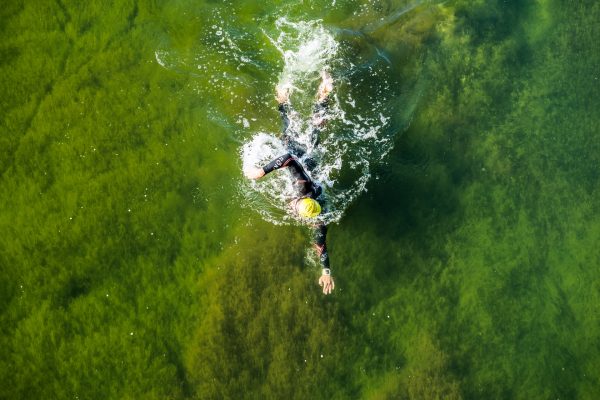
Triathlon wetsuit care
Look after your kit
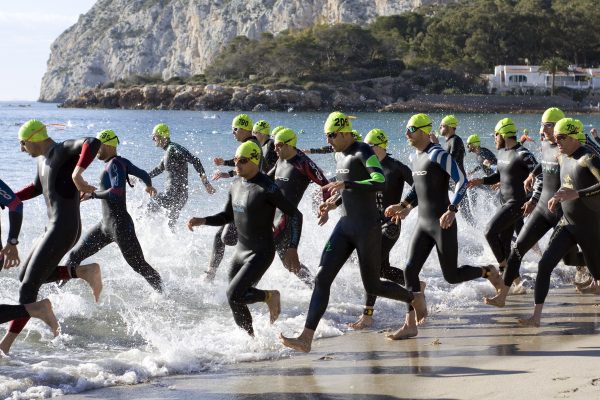
How long is a triathlon?
Triathlon distances explained
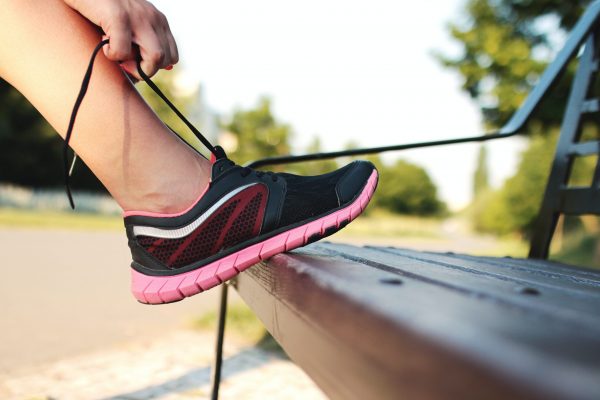
What to wear in a triathlon?
Essential triathlon kit

How to train for your first triathlon
training advice
Email: contact@smarttriathlete.com